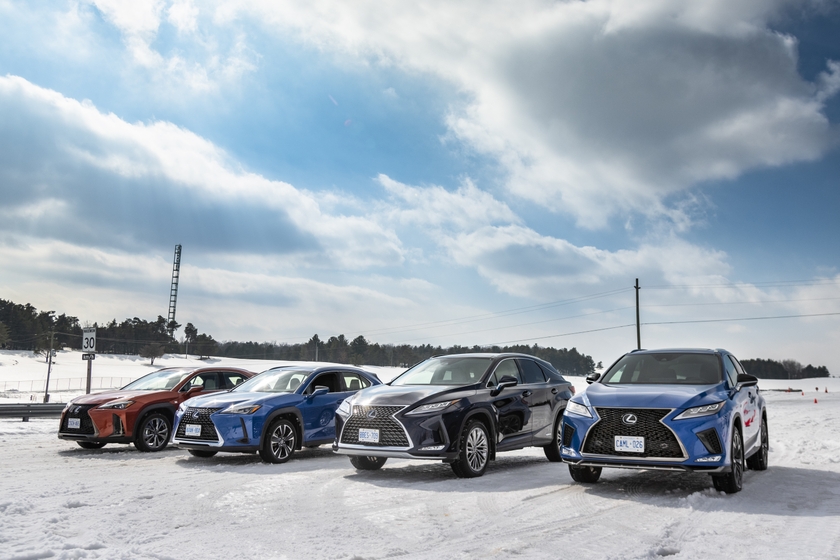Lexus gave us a unique opportunity to test drive a lineup of their all-wheel drive vehicles on a series on snow-covered courses. The purpose of the event was to showcase their various all-wheel drive systems in terms of how well they can perform in severe weather conditions. The majority of the Lexus lineup was represented and in attendance, which gave us a great opportunity to compare how the different models are able to handle themselves in extreme conditions.
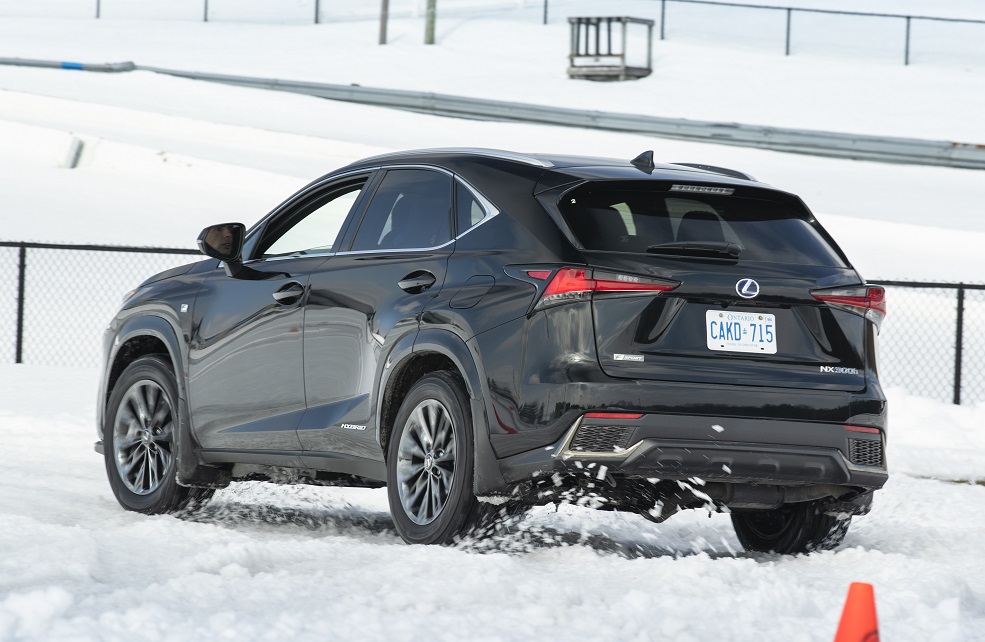
The event began with a twisty snow-covered course and a back-to-back drive of the NX 300 and NX 300h crossovers. Although both models come standard with all-wheel drive, each goes about it in a different way. The NX 300 uses a 2.0L turbocharged engine matched to a 6-speed automatic transmission and a mechanical all-wheel drive system. The NX 300h, on the other hand, uses a hybrid drivetrain with a gas engine powering the front wheels and an electric motor powering the rear wheels. Although each model puts the power down in very different ways, both proved to be equally competent at handling themselves on the slippery snow-covered course. The same proved to be true of the ES 250 AWD and RC 350 AWD, both of which were available to sample on the same course.
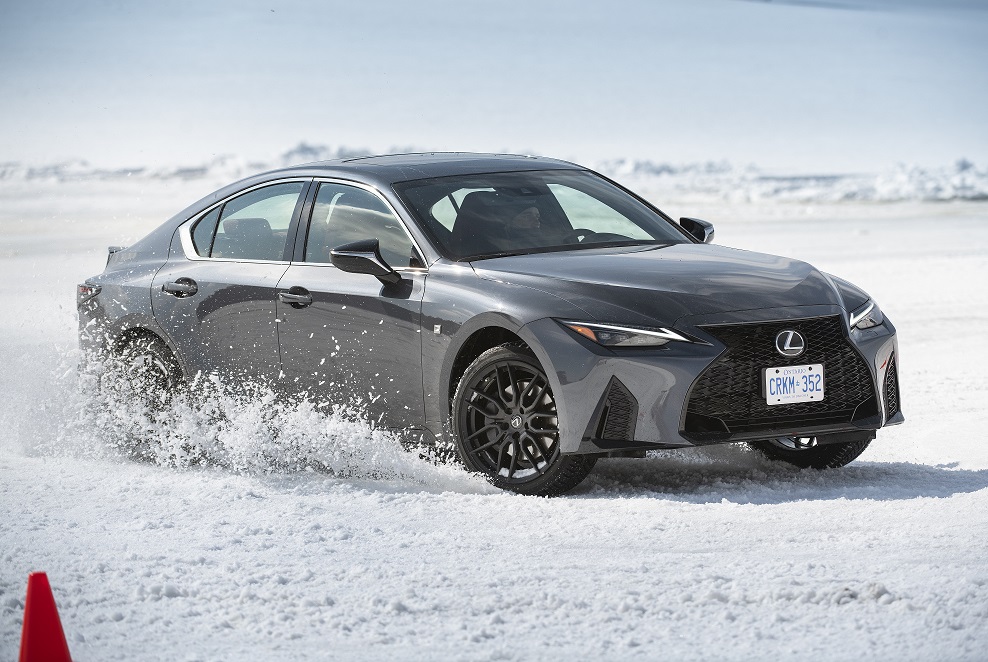
The next challenge consisted of a side-by-side comparison of the latest IS 350 AWD against a fleet of first generation IS 300 RWD sedans courtesy of DriveTeq. With nearly 20 years of development and progression between them, the IS sedans all proved to be quite talented and fun on the snow-covered drift course. Thanks to their RWD chassis and lack of modern driver aids, the older IS 300 sedans were by far the easier versions to drift. Although the latest IS 350 is very capable, its fun factor was significantly diminished by comparison. Still, with a bit of prodding, its balanced chassis and playful nature was able to shine through just enough to perform a few successful drifts.
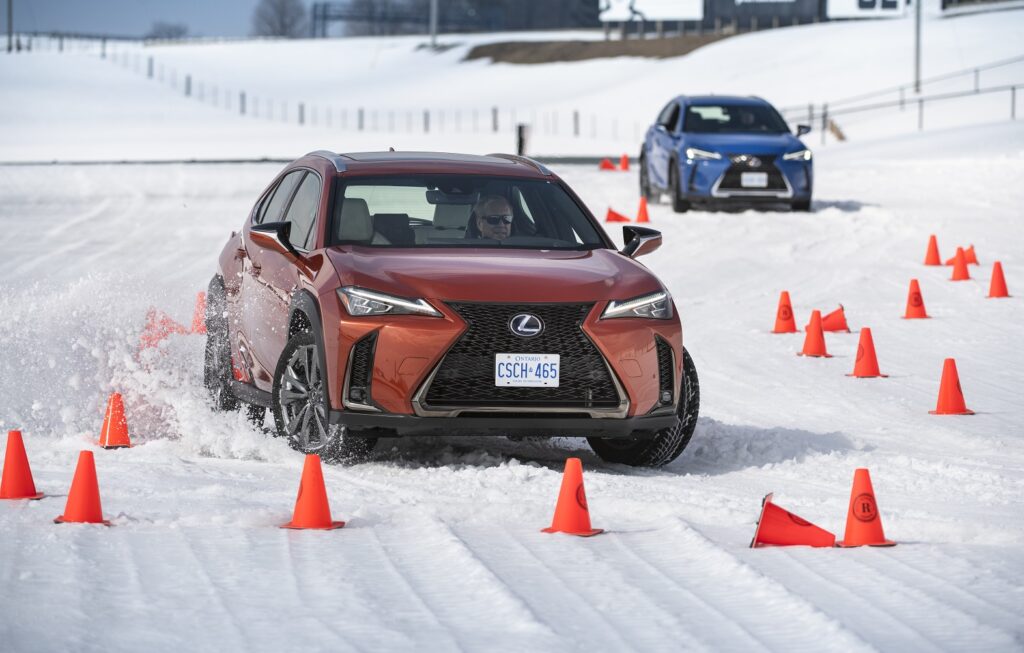
The event ended with a drag race between a pair of UX 250h crossovers followed by a race between the much larger and more powerful RX 350 and RX 450h crossovers. The purpose of this challenge was to showcase the difference between a vehicle equipped with winter tires versus all-season tires. Although both crossovers were able to launch from a dead start equally well thanks to traction advantages of the all-wheel drive systems, the same could not be said of braking. The winter tire equipped crossovers were able to brake and stop in a much shorter distance when compared to the all-season tire equipped crossovers. Stronger braking and cornering performance on slippery surfaces are some of the main advantages of winter tires, and the drag race was able to demonstrate those advantages very well.
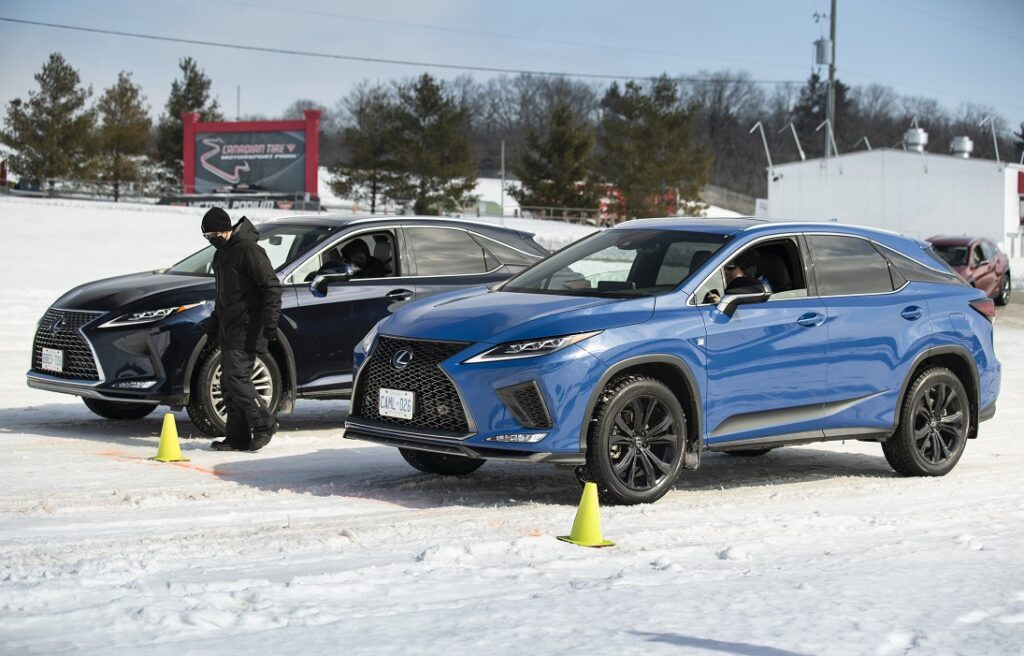
Overall, the Lexus lineup is quite impressive and convincing enough to sell me on the advantages of a well-engineered all-wheel drive system. If a confidence-inspiring driving experience is what you're after, especially in severe winter weather, then Lexus has you covered.

